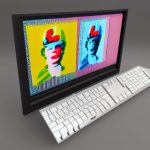10 Ways Action Figures Enhance Your Education
Action figures have fueled the happiness of children all over the world for decades now. While the act of playing with simulated characters goes back to Army Men, the industry didn’t really start to get huge until the 1980s when dozens of properties like Transformers, M.U.S.C.L.E.S., MASK, G.I. Joe, Thundercats, He-Man and the Masters of the Universe, She-Ra: Princess of Power, and a variety of others got huge.
The growth of the market owed much to television, a pastime that was often blamed for rotting the brain. Regardless of what you feel about that, there’s no denying the educational significance of action figures and related products. In fact, as we think back to the Christmases of our youth, we can’t help but notice the learning benefits we enjoyed from the simple act of playing with them. Here are 10.
1. Action Figures Teach Basic Anatomy
Okay, this is an easy one. And it’s one you usually take for granted as you move into the more mature properties (i.e., G.I. Joe and Transformers). But when just starting out, action figures help you explore the body’s main parts in a safe and healthy manner. Legs, feet, arms, hands, head, facial features, chest, stomach. They’re usually a reflection of us, and that makes it easy to connect to something outside of ourselves.
2. They Demonstrate Physics
An action figure demonstrates the properties of physics on an admittedly simplistic but effective level. You learn by playing too roughly with one that it has its limits of motion. Pull the wrong way on an arm or a leg — and pull with enough force — and it’s entirely possible that bad boy is coming off. If it doesn’t, you learn something about the tension with which the toy is fastened as well as the limits of flexibility.
3. They Teach External Conflict and Conflict Resolution
Most of us did not own a single action figure. We may have only owned one figure from a particular property, but that individual unit didn’t sit idly on the sidelines. He mixed it up. It was entirely possible that if you walked through my house circa 1986, you would have witnessed a Transformer and G.I. Joe teaming up in battle against Skeletor and his Evil Hordes. This need to have the figures play off one another helped us create external conflicts in our minds. And where there’s conflict, there’s the need for resolution. One that usually ended with the good guys saving the day!
4. They Show Cause and Effect
As you get into the nuts and bolts of conflict development, you start delving into cause and effect. One thing has to happen to put two action figures at odds; then another thing and perhaps another and another have to happen to resolve it. This rather complex building block of good storytelling can be learned at a very young age thanks to these types of toys.
5. They Emphasize the Importance of Having the Right Tools for the Job
Yes, action figures do exist wherein there are no accessories — i.e., rifles, laser cannons, pistols, lightsabers, swords — exist. It’s just the character in his simple glory. But most of these toys realize that accessories like those mentioned help to teach children that each character has a different function and he requires different tools of support to carry it out.
Children also learn how to better take care of their things from having these accessories. And if you don’t believe that, just watch how frustrated a child gets when he or she loses the accessory that helps make their character stand out in its coolest form. Seriously, is Darth Vader much good to you without his red laser sword of death? Didn’t think so!
6. They Illustrate the Importance of Special Projects
Okay, this may seem like a bit of a reach. But if you give it some thought, it makes sense. Let’s examine something like Skeletor from the He-Man and the Masters of the Universe series of cartoons. Skeletor — the action figure and the character — are relatively interesting on their own. But they risk becoming boring without something to do.
The staff and sword Ol’ Boneface came with back in the day were okay to a point, but it was easy to tire of them after you’ve had He-Man kick his butt for the umpteenth time. Enter Snake Mountain, Skeletor’s super-cool hideout lair. This “special project” helped complete Skeletor and gave fans of the toy line something to prolong the enjoyment and benefits of the Skeletor toy itself.
The lesson here is that special projects matter. You may think that research paper is a waste of time and you’d rather be doing simple homework and tests, but that’s just because you haven’t realized the full potential of a successful project that applies a theory or principle to the real world. Major action figure add-ons are basically the research papers of the toy world. They give you a clearer understanding of the mission, the character, and the main thrust of the property.
7. They Teach You About Budgeting
When you start collecting action figures — at least if you have an allowance or a family that sticks to a budget during the Christmas season — you learn real quickly how many of these plastic-cartoned figures you’ll be capable of getting.
My brother and I, just as an example, spent many nights during the Christmas season crunching the numbers on the $100 limit-per-kid my parents set for us. We would strike some “Maybes” off the list if it got too budget-intensive and go with more of something else that had a cheaper price point.
If not for the act of collecting action figures, financial literacy may have been harder to achieve.
8. They Often Encourage Reading and Literacy
Children who care about the stories they start to follow in action figure form like to eat up every piece of intel that they can about the overarching story, the characters they love, and those characters main obstacles, both internal and external. This emphasis on storytelling plays right into the concepts that drive a love for reading and literacy.
After buying an action figure, you’re probably going to read the description a few times, tear off the packaging, and commence to incorporating key facts from that material into your own personal narrative. The more you do this, the easier it will be to approach a longer form of storytelling.
9. They Teach You the Importance of Sometimes Breaking the Rules
Every time you watch a cartoon on television or online, the good guys typically prevail. You’re along for the ride with no say in the matter whatsoever. Not that big of a deal since you like the good guys, but what if?
What if the unthinkable could happen and the bad guys could win one occasionally? You may never see that happen on the TV or Internet. But you can make it happen when the power is in your own hands. How many of you have ever had a dastardly villain like Skeletor triumphant over his do-gooder foe? I know I did. And it gave me an appreciation for the bad guy’s tactics later on in life — in ways that served me for good and bad, to tell you the truth.
10. They Fuel the Imagination
Last but not least, action figures are not only kick-butt Christmas gifts when you’re growing up, they’re tools that help to fuel the imagination and empower us as we move from grade to grade. They do this by taking the narrative away from the professional writers and rights-holders and putting it in our hands.
We can take these familiar characters and build up new worlds and stories with them. And no one can say a darn thing to stop us. We’re in control. Not only does this help with confidence, but it also helps us to construct problems from the ground up and figure out ways they can be addressed. Nothing is more useful to creativity than that!
Final Thoughts
Very few people in civilized and prosperous countries have gone from birth to adulthood without owning at least two action figures. And if you’re of a certain age, you’ll probably be getting a lot more in less than 24 hours from reading this.
While it’s obvious they’re fun, don’t discount the educational value they bring along with them. And the next time anyone tells you, you’re wasting your time playing with them, just rattle off the 10 benefits we’ve listed above. Happy Holidays!
[Featured Image by Flickr Creative Commons]








